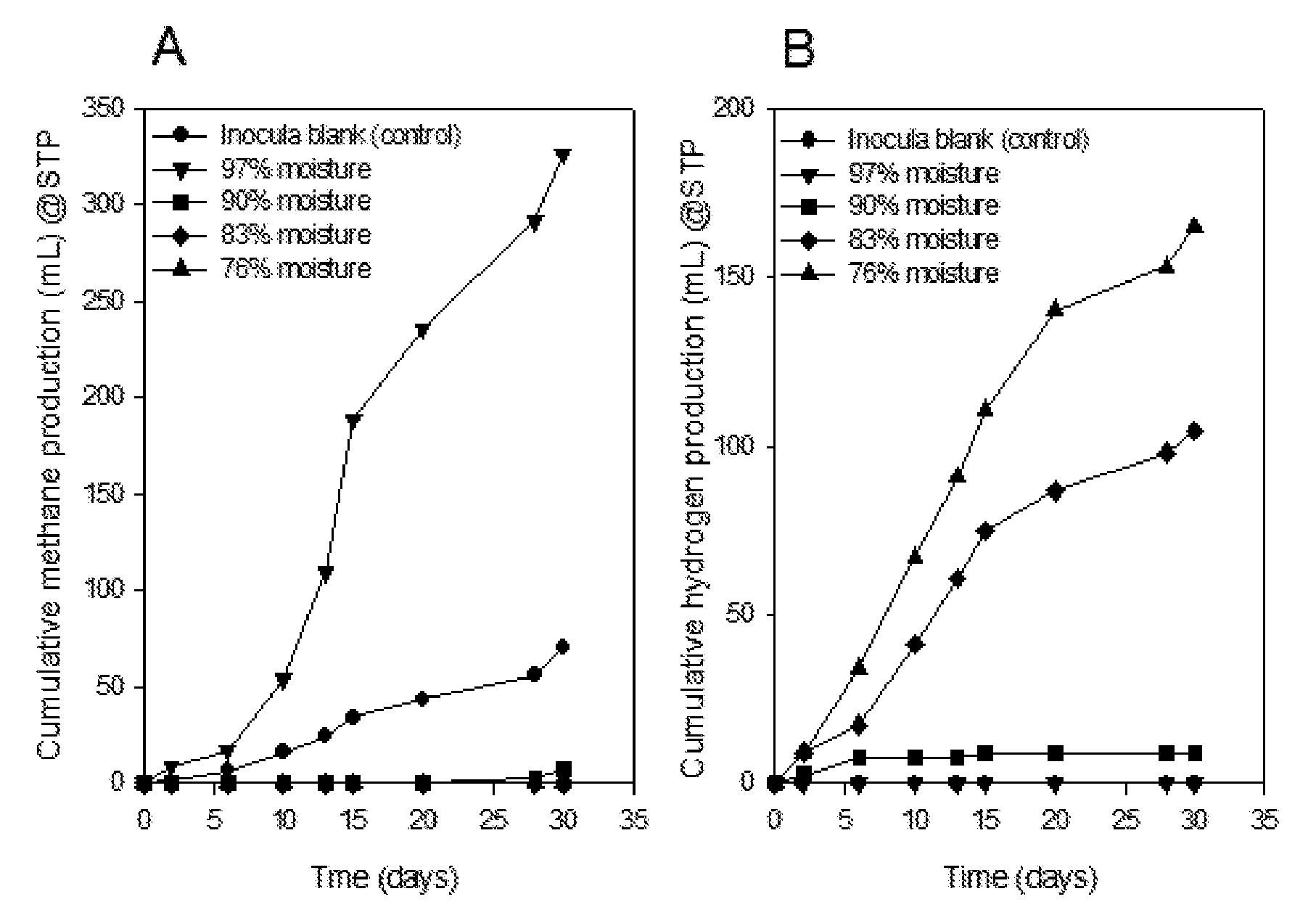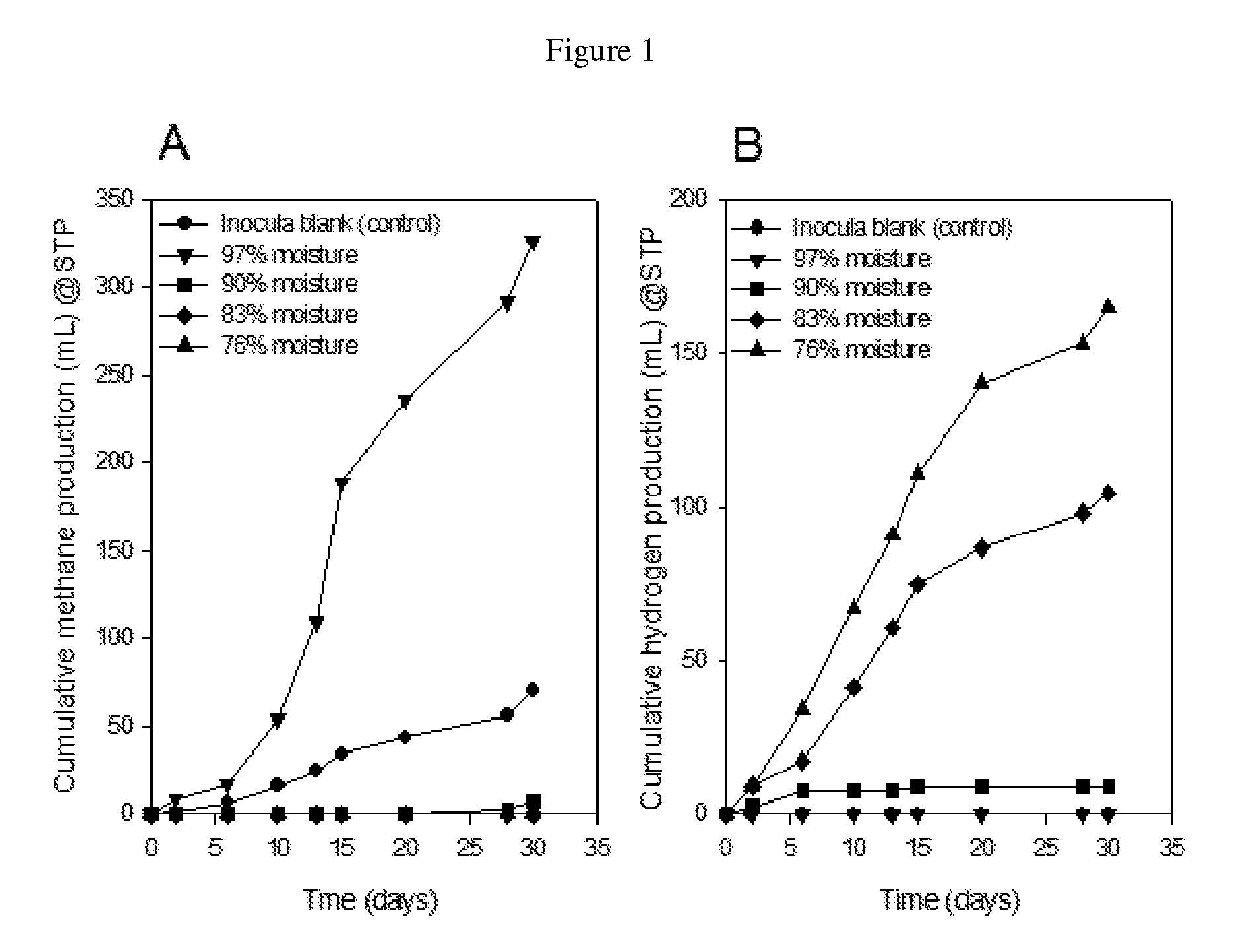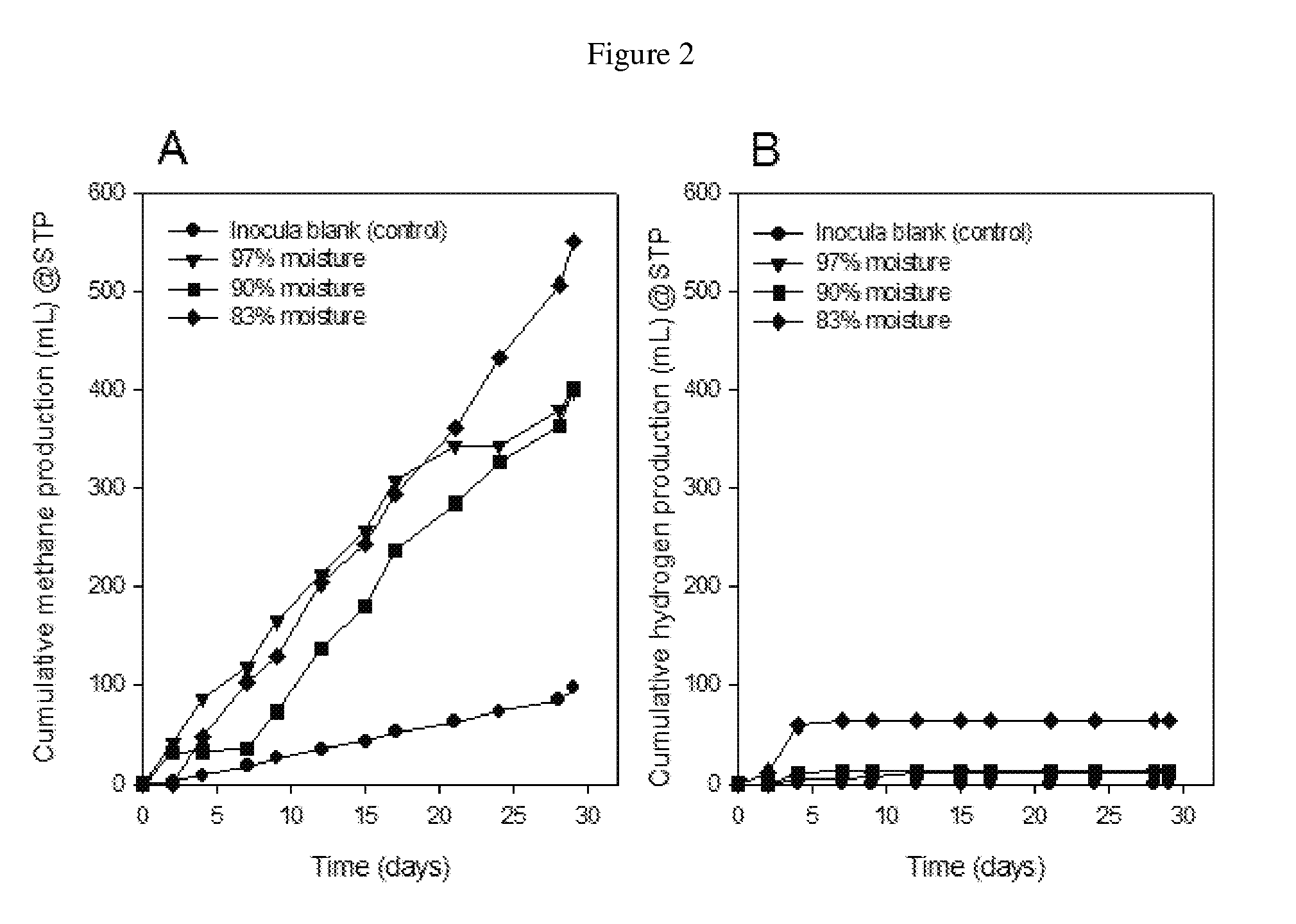Methods for selectively producing hydrogen and methane from biomass feedstocks using an anaerobic biological system
a biological system and biomass feedstock technology, applied in the field of selective production of hydrogen and methane from biomass feedstocks, can solve the problems of significant environmental problems, process requires significant energy and expensive enzymes or gasification, process requires very high temperatures and specialized equipment, etc., and achieves the effect of more cost-efficien
- Summary
- Abstract
- Description
- Claims
- Application Information
AI Technical Summary
Benefits of technology
Problems solved by technology
Method used
Image
Examples
example 1
Substrate and Inocula for Production of Hydrogen and Methane
[0080]The bacterial inocula for Examples 2-3 were obtained from the bottom portion sludge of an anaerobic digester plant at Coors Brewery (Golden, Colo.). Corn stover pretreated with ammonia fiber explosion (AFEX) (total solids: 52.3%; volatile solids: 48.5%) was used as a biomass feedstock substrate to perform the methods described in Examples 2-3. Corn stover without any pretreatment (total solids: 93.7%; volatile solids: 88.4%) was used as a control.
example 2
A Method to Produce Hydrogen and Methane Gas
[0081]The bacterial inocula (also referred to herein as seed sludge), containing a mixed anaerobic bacterial community, was exposed to a severe dried condition as described herein to deactivate, inhibit, or injure selectively the vegetative methanogenic bacterial species from the mixed bacterial community. The batch culture method was performed in a glass serum bottle with a working volume of 100 mL. Seed sludge cultures were mixed with sodium bicarbonate and the pH was adjusted to an initial pH of about 7. Seed sludge was placed at the bottom of the serum bottle and then covered with corn stover biomass with and without pretreatment. Exposure of the cultures to a “severe dried condition” (as low-moisture-stressed microenvironment) lead to higher hydrogen / methane yields.
[0082]In one example, each seed sludge was inoculated at 10.0% (v / v) into corn stover substrate. Two sets of bottles (150 mL per bottle) for different moisture concentratio...
example 3
Production of Hydrogen and Methane Under Variable Moisture Conditions
[0083]Hydrogen and methane production patterns varied with the moisture (solid) concentration. As shown in FIG. 1 (pretreated biomass feedstock) and FIG. 2 (non-pretreated biomass feedstock), methane production increases with increased moisture content whereas hydrogen production decreases. For example, as shown in FIG. 1A, a moisture concentration of 97% produced high methane with no hydrogen production. As shown in FIG. 1B, a moisture concentration of 76% produced a high hydrogen yield with no or little methane production. Thus, low moisture concentration (high solid concentration) enriched hydrogen-producing bacteria and deactivated hydrogen-consuming methanogens or hydrogen-consuming bacteria, increasing hydrogen production.
[0084]Non-pretreated feedstock exposed to high and low moisture concentrations did not produce significant amounts of hydrogen gas (compare FIGS. 2A and 2B). These results indicate that the ...
PUM
| Property | Measurement | Unit |
|---|---|---|
| pH | aaaaa | aaaaa |
| pH | aaaaa | aaaaa |
| temperature | aaaaa | aaaaa |
Abstract
Description
Claims
Application Information
 Login to View More
Login to View More - R&D
- Intellectual Property
- Life Sciences
- Materials
- Tech Scout
- Unparalleled Data Quality
- Higher Quality Content
- 60% Fewer Hallucinations
Browse by: Latest US Patents, China's latest patents, Technical Efficacy Thesaurus, Application Domain, Technology Topic, Popular Technical Reports.
© 2025 PatSnap. All rights reserved.Legal|Privacy policy|Modern Slavery Act Transparency Statement|Sitemap|About US| Contact US: help@patsnap.com



